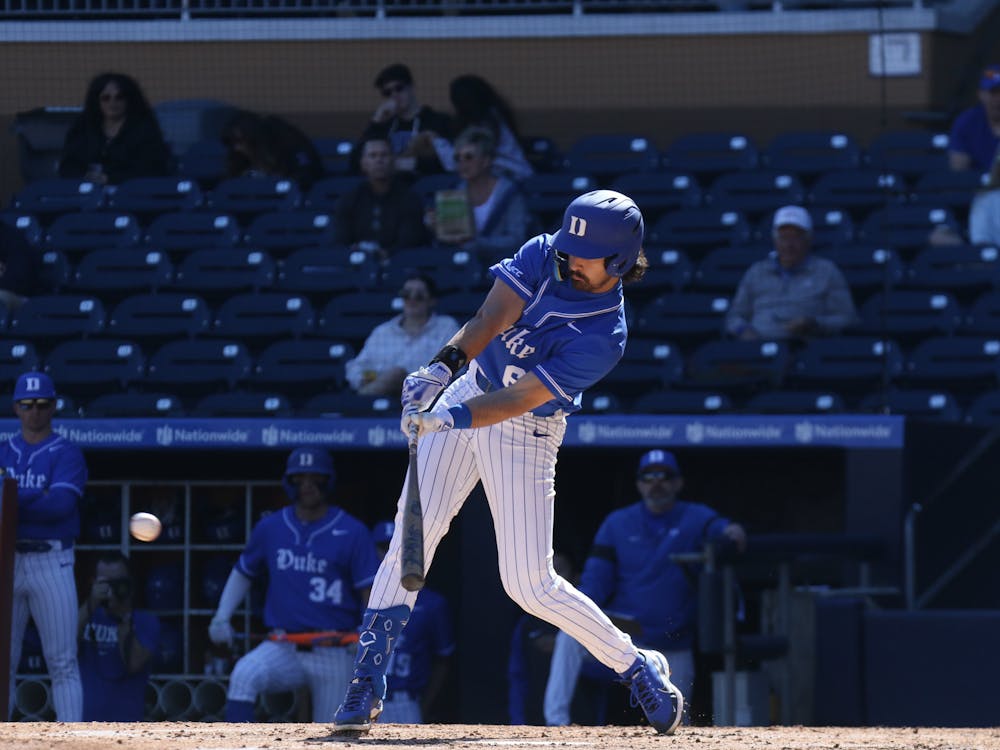It has been a year of ups and downs for Duke this year. The Blue Devils have come away with blowout victories against nationally ranked squads including Campbell, along with massive double-digit wins against weaker mid-major schools. The trouble for Duke has been in its ACC games, where the Blue Devils are just 7-7 and have yet to sweep an opponent in a three-game series. While the ACC is arguably the strongest conference in college baseball, Duke could have been in a much better position at this point in the season with a little bit more consistency.
So, what is causing the issues? What separates the wins from the losses for the Blue Devils? How can Duke become a more consistent squad down the stretch, and potentially sneak into the postseason? Let’s take a look.
Racking up the runs
It likely comes as no surprise that the key to winning baseball games is scoring runs. Those are indeed the rules of baseball. That being said, the contrast in win totals is sharp between the high-scoring games and the low-scoring ones. The Blue Devils are undefeated in games where they have scored double-digit runs. But when the bats struggle, so does the rest of the team. Duke is just 9-11 in games where it scores less than 10 runs. Oftentimes, when the Blue Devils struggle to hit, they also struggle to do just about everything else.
This connection between the bats and wins exists for a few reasons. As mentioned above, there is a simple correlation between scoring more and winning games, but there is a deeper level to this. When the Blue Devils cannot hit the ball, they leave their pitchers stranded on the mound. Because head coach Chris Pollard has opted to go with a small-ball strategy on the mound this year, most of his pitchers are not accustomed to throwing more than 30 or 40 pitches.
When the bats stumble, the hurlers have less time to rest and warm up in the bullpen. It quickly transforms into a vicious cycle, in which pitchers get stuck up on the mound because they are coming in colder than they would like and are forced to throw more. They give up more runs, Pollard is forced to make a personnel change on the mound and the cycle repeats itself. Duke not only needs to score runs for the sake of putting points on the board, but also to extend innings and give its pitchers time to prepare and recover.
Back-half production
Another persistent key we’ve seen this year comes from the back half of the lineup. When players at the end of the card are producing, the impact is tangible. In an 11-7 victory against Pittsburgh, graduate outfielder Giovanni DiGiacomo homered and reached base on walks in two of his other at-bats. The story is similar for freshman outfielder Tyler Albright, who went 2-for-4 on the day and tacked on a run and an RBI. When Duke’s back end of the lineup — which traditionally has been a weaker spot — can produce, the Blue Devils are a better team for it.
That is true not only because of the immediate production that generally comes when a team gets players on base, but because of the opportunities it sets up for the typically stronger hitters. Alex Mooney, who bats first, is a much more dangerous at-bat when there are runners on first and second. Without runners, a double just leaves Mooney on second. Especially with speedsters like DiGiacomo, a Mooney hit might lead to some key runs making it home.
Wrapping up
As it turns out, one of the central keys to more in-conference success down the stretch is hitting with consistency. When the entire lineup can produce offense, the Blue Devils play better on both sides of the ball. There are some big-time games coming up as the squad from Durham will play No. 11 Boston College and No. 10 Louisville in its next two series.
Get The Chronicle straight to your inbox
Signup for our weekly newsletter. Cancel at any time.

